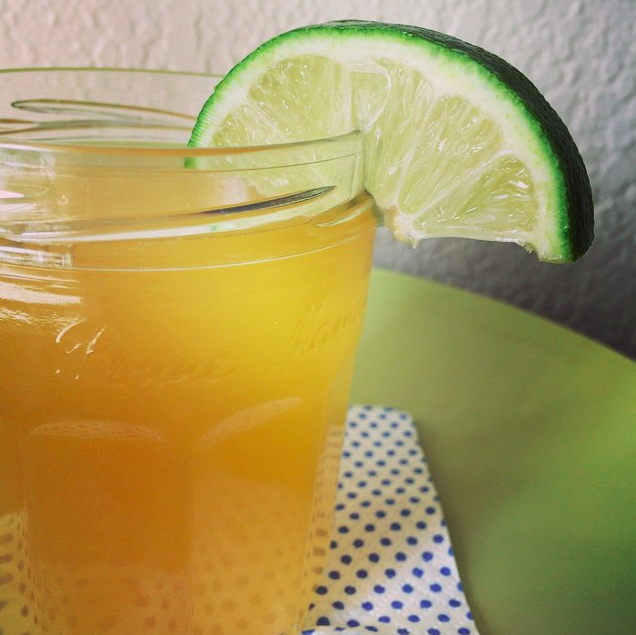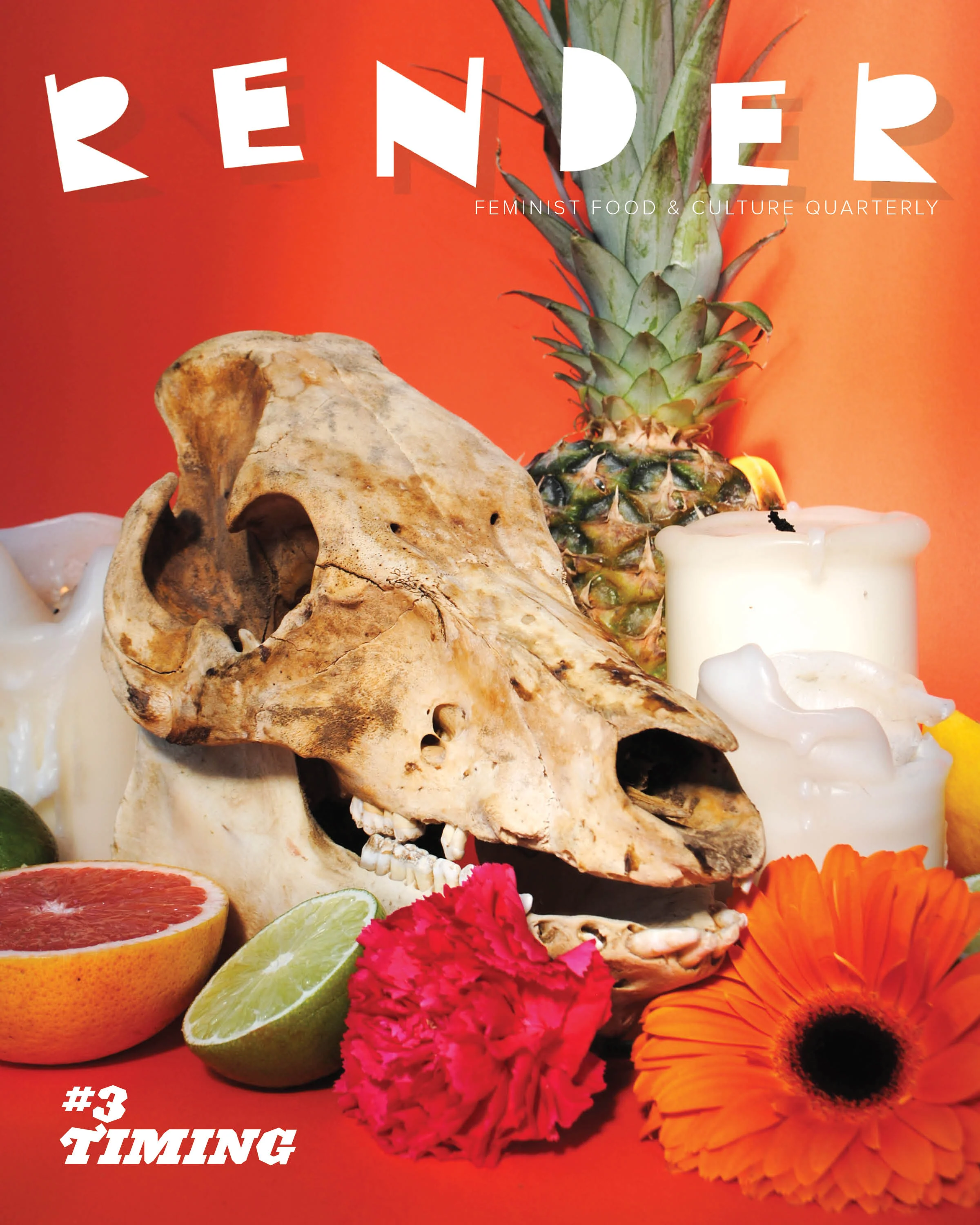Photo from The Chopping Block.
I recently found myself standing in a white apron in an upscale industrial kitchen that somehow emanated the warmth of a hearth. I was surrounded by a dozen strangers, all with a similar goal: to learn how to cook meat—not just properly, but in a way that would sear in the juices, enhance the flavor, and increase tenderness. If you regularly cook meat, you might be wondering why a 47-year-old woman would require a lesson like this so late in life. It has taken years to admit this to myself, but it was because I had never really faced my fear of meat.
I have spent my life plagued with insecurity about cooking flesh. I’ve dabbled with marinades, kebabs, roasts, and stews, but every attempt has been tinged with worry. How can I stop it from being tough? Will I burn it? Could I poison my family if I undercook it? Why is it so gross to touch? Will I dishonor the animal who sacrificed its life if I screw everything up?
My relationship with cooking and meat has always been complicated. I grew up in a rural town by the ocean, where my dad would do clam bakes in a giant vat. My granddad taught me how to boil crabs fresh from their traps. My uncle taught me how to catch and filet a fish at the dock. My other grandfather showed me how to collect eggs and had me hold the chicken by its feet on the tree stump while he beheaded it with an ax. My stepdad taught me the care and feeding of the pigs, Starsky and Hutch, and how their absence from our corral was part of life. Although I never went hunting, my father made sure I was well versed in the art of weaponry, able to shoot both a rifle and a bow. I was a diehard tomboy, ranging around the woods and beaches with my cousins, experiencing an almost spiritual sense of delight in the great outdoors.
So when my mother invited me in to the kitchen as a youth, I barely showed up to help set the table or lick the cookie bowl and I scoffed at her attempts to teach me to cook. She worked 40 hours a week and told me I could be whatever I wanted to be and that my future husband could do the cooking if I was too busy with my high-powered career as Madam President. So in spite of a great love of food, I escaped childhood with nary a kitchen skill. In the black and white logic of youth, I simply couldn’t align equality between the sexes with cooking. Instead, I equated cooking with being stuck at home, away from wilderness and adventure. Meat took men out of the house and into nature, while cooking it kept women at home.
Now, almost 30 years later, my life is a hybrid. I’m outside the home with work, deadlines, errands, and – much to my inner 8-year-old tomboy’s surprise – a larceny of meals to plan and execute. My roles both in and out of the kitchen aren’t as black and white as I had once imagined. I am certain now that if hunger were a problem, I would not hesitate to shoot that deer in order to feed my family, no matter how hard it would be to face the carcass afterwards. The only problem is that I’m still winging it in the kitchen.
So when a search for a sushi-making class led me to a cooking school, I channeled my inner adventurer and instead opted to sign up for the most carnivorous cooking class I could imagine. It was called Meat 101, offered at The Chopping Block, Chicago’s premier school for home cooks. I hoped to pick up right where I left off in my meat prep education as a child starting with the question, “So after the chicken finishes its headless death panic and collapses in a heap, can you show me how to pluck it and toss it in a pot?”
I envisioned large knives, blood-spattered aprons, and bone crunching equipment to ease my transition in to the setting of the confident cook. But the people at The Chopping Block are aiming for a different vibe. What greeted me upon arrival was a small horde of female chefs, dressed all in black like ninjas.
They were there to explain, coax, and demonstrate (as well as serve us the alcoholic beverages of our choosing), all while counseling students on our shaky techniques. They also used their ninja disguise to sweep away obstacles like used pans, stealthily replacing them with fresh provisions. Entering The Chopping Block feels a little bit like entering your grandmother’s farm kitchen, but only if your grandmother’s kitchen had really good lighting, industrial equipment, state-of-the-art cookware, and organic food supplies impeccably and aesthetically arranged.
There were about sixteen of us there. Our main chef Erin explained the rules. We would prepare three full meals, with few green things involved, and we were to ask questions, interrupt, get messy, have fun, and learn. This wasn’t an Iron Chef kind of kitchen.
We paired up in groups of three or four. I was grouped with an older couple and a woman taking the class so that when her boyfriend returned from his tour of duty in Italy and they were wed at last, she would have “all her recipes ready.” I wanted to prove my team worth, but I found myself focusing on the vegetables. True to form, I encouraged our one man to take on all of the tasks that had to do with meat. “You want to do the salt rub, Roger?” I’d say, dicing a fennel bulb into satisfying wedge shapes as instructed. But my group was hip to fairness, and soon it became clear that here, meat was everyone’s job.
We began to prep the spicy soy-glazed short ribs and I took notes. The amount of information I should have known already was staggering. Let meat reach room temperature before cooking in order for it to cook faster and not get tough. Heat the pan without oil, then add oil and heat it, then add meat. When searing, don’t flip it and check, like you check your phone for texts. Just let it sear until it’s done searing—that’s how you get a tenderer cut of meat. These were things I might have learned much sooner in life had I not been out goofing around when it was time to make dinner. Nearly every action I learned was a revelation in linear logic.
Even learning about braising revealed a secret level of meat preparation. A method of slow cooking for non-ideal cuts of meat, braising tenderizes them by the process of frying meat first, then stewing it in a closed container. Erin explained that it breaks down the tough tissues like collagen and ligaments. It’s a good cooking method for chuck roasts, short ribs, and lamb shanks. Braising may have solved a few of my tough meat failures in the past.
When the short ribs were done searing and put in a sturdy Le Creuset pan with a delicious and spicy hoisin marinade to braise, we turned to our next three recipes: pork Milanese, warm kale potato salad, and roasted rack of lamb with pomegranate-fennel glaze. By then, my team was a tight-knit thing of beauty. The army wife’s knife skills and powers of concentration kept us on time. The married couples’ homey, synchronized task-sharing kept things peaceable. The ninjas kept us from making beginner’s mistakes like dumping in the wrong marinade or forgetting to season the flour. I kept us all joking around, asking questions about one another and sipping booze while easing into my role as sous chef who wasn’t afraid to touch meat.
When our creations were complete, we ate family-style at tall oaken tables, sitting on metal garage stools, completely comfortable with each other’s company. Colleges, homes, weddings, offspring, and retirement plans were discussed in between exclamations of awe over what we had made. The ninja chefs hovered around and smiled proudly like grandmothers in their home kitchen. The food was delicious. I understood at last that some cooking can be improvised while some require specific skills and preparation. If you knew how to treat it, it was a gift you got to re-wrap and re-gift, and with all of the cuts of meat that were out there, the methods for preparing them to perfection had to be nearly limitless. Meat had become knowledge. The peace of this washed over me like a brine solution and soaked in for good.
As I cleaned up my station and said goodbye to the tidy cooking world of The Chopping Block, I thought about a few of the culinary skills I had honed. Now I not only had the ability to feed friends with up to three meat-centric dinner parties, but I also knew how to dice an onion more efficiently, where to buy lemongrass, how to determine when meat is done, what to do with lesser cuts of meat, and how to sear a piece of meat for perfect brownness without fussing over it.
A horde of sous ninjas who have your back (and happen to do the washing up) takes the fear of failure right out of learning any new technique. With their help, I had embraced the idea of meat as a canvas while handling the real thing—seasoning it, cutting it, cooking it, and changing its nature from raw sustenance to a sublime experience. In the process, I was reminded of my early days when the hands-on act of catching fish and gathering eggs was a primal pleasure in life, or an adventure that tested your mettle instead of just a messy diversion. The art of the kitchen can be like that hunt—a literal revelation as something you happened to find becomes something wonderful to eat. I’m happy to say without hesitation or anxiety that Rack of Lamb is now on the menu for my next dinner party.






























